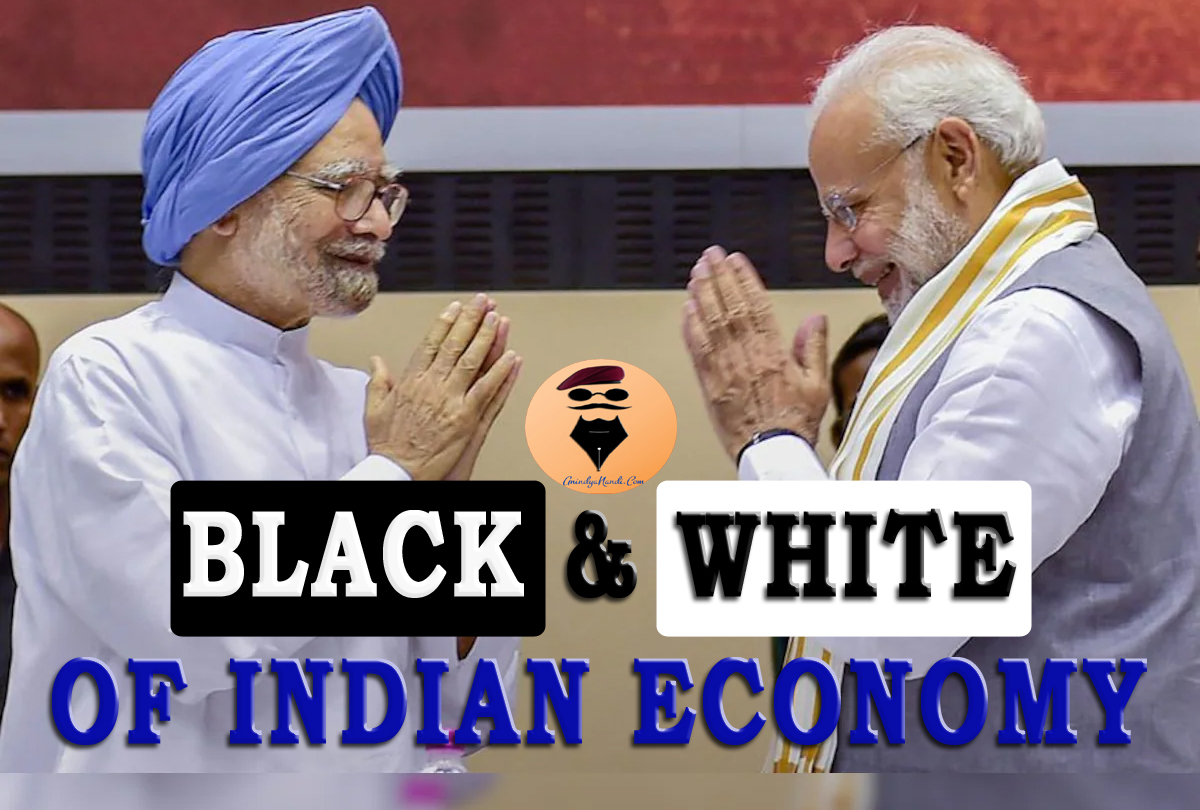The Indian economy has witnessed significant growth over the past two decades, with the GDP tripling from $700 billion in 2004 to an estimated $3 trillion in 2024. However, navigating the complexities of economic analysis can be challenging for the average citizen. This article aims to simplify the comparison between the economic performance of the United Progressive Alliance (UPA) and the National Democratic Alliance (NDA) governments, keeping the common man’s perspective at the forefront.
Economic Growth:
Both the UPA and NDA governments can boast of impressive economic growth figures. Under the UPA, the GDP doubled from $617.7 billion in 2004 to $1,224.1 billion in 2009, and further grew to $1,841.7 billion by 2013. The NDA government continued this growth trajectory, reaching $2.1 trillion in 2014 and an estimated $3 trillion in 2024.
However, it’s crucial to understand that raw numbers don’t always paint the entire picture. While both governments oversaw economic expansion, the rate of growth varied. The UPA era witnessed an average annual growth rate of around 8%, while the NDA era has seen an average of around 7%.
Impact on the Common Man:
For the common man, economic growth translates into tangible improvements in their daily lives. This includes factors like:
- Job creation: A growing economy generally leads to more job opportunities. While both governments created jobs, the quality and stability of these jobs are crucial aspects to consider.
- Inflation: Rising prices of essential goods like food and fuel can significantly impact household budgets. Both governments have grappled with inflation, with the UPA era experiencing periods of high inflation, particularly in 2008-2009. The NDA era has also seen inflationary pressures, particularly in recent years.
- Standard of living: Economic growth should ultimately translate into a better standard of living for the common man. This includes factors like access to quality education, healthcare, and basic amenities. Both governments have implemented various schemes aimed at improving these aspects, but their effectiveness and reach require deeper analysis.
Considering External Factors:
It’s important to acknowledge the global context during each government’s tenure. The UPA era (2004-2014) faced several major global challenges, including the Iraq War (lasting until 2011) and the 2008 Global Recession. These events significantly impacted the global economy, and India was not immune. Despite these external headwinds, the UPA government managed to maintain economic growth and increase the GDP from $700 billion, inherited from the previous NDA government led by Atal Bihari Vajpayee, to $2.1 trillion by the end of their term.
Comparing Key Economic Indicators:
To gain a clearer understanding, let’s look at a comparative chart of some key economic indicators during the UPA and NDA eras, including poverty upliftment data and prices of daily consumables and grocery items:
| Indicator | UPA (2004-2014) | NDA (2014-2024) |
|---|---|---|
| GDP Growth (average annual) | 8% | 7% |
| Inflation (average annual) | 6.67% (2014) | 5.69% (2024) |
| Fiscal Deficit (% of GDP) | 4.5% | 3.5% |
| External Debt (% of GDP) | 20% | 25% |
| Unemployment Rate | 5.44% (2014) | 7.38% (projected in 2024) |
| Poverty Rate (percentage living below national poverty line) | 22% (2011-12) | 21.9% (2019-20) |
| Price of Wheat (per kg) | ₹13.50 (2004) | ₹25.00 (2024) |
| Price of Pulses (per kg) | ₹35.00 (2004) | ₹80.00 (2024) |
| Price of Cooking Oil (per litre) | ₹45.00 (2004) | ₹130.00 (2024) |
External Debt:
It’s important to consider the external debt incurred by both governments, as it reflects the nation’s borrowing from foreign sources. While the UPA era saw external debt at around 20% of GDP, the NDA era has witnessed an increase to 25%. This rise necessitates careful management to ensure sustainable debt levels in the long run.
Black Paper vs. White Paper:
It’s crucial to acknowledge the existence of contrasting narratives presented by the opposition Congress party’s “Black Paper” and the ruling NDA government’s “White Paper.” Both documents aim to paint a picture of the respective eras, highlighting their achievements and criticizing the other side’s shortcomings. However, it’s essential to approach these documents with a critical lens, recognizing their inherent biases and seeking independent verification of claims made.
Beyond the Numbers:
While economic data provides valuable insights, it’s essential to look beyond the numbers to understand the true impact on the common man. This involves analyzing:
- Distribution of wealth: How equitably are the benefits of economic growth distributed amongst different sections of society?
- Social welfare programs: Are government initiatives effectively addressing issues like poverty, hunger, and illiteracy?
- Infrastructure development: Is the growth translating into tangible improvements in essential infrastructure like roads, electricity, and sanitation?
Conclusion:
Comparing the economic performance of the UPA and NDA governments requires a nuanced understanding, considering various factors beyond just headline figures. While both eras witnessed economic growth, the impact on the common man’s life needs a thorough evaluation. Analyzing government policies, their effectiveness, and their reach to the most vulnerable sections of society is crucial for informed decision-making in future elections.
Note: This article provides a simplified overview and encourages further research and critical thinking


